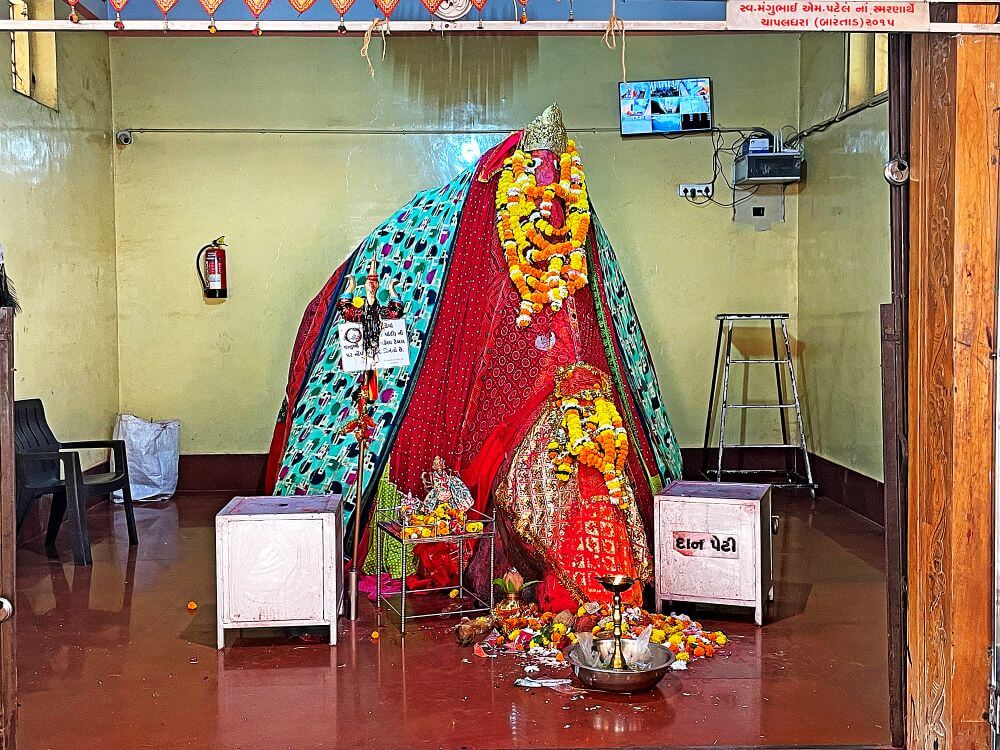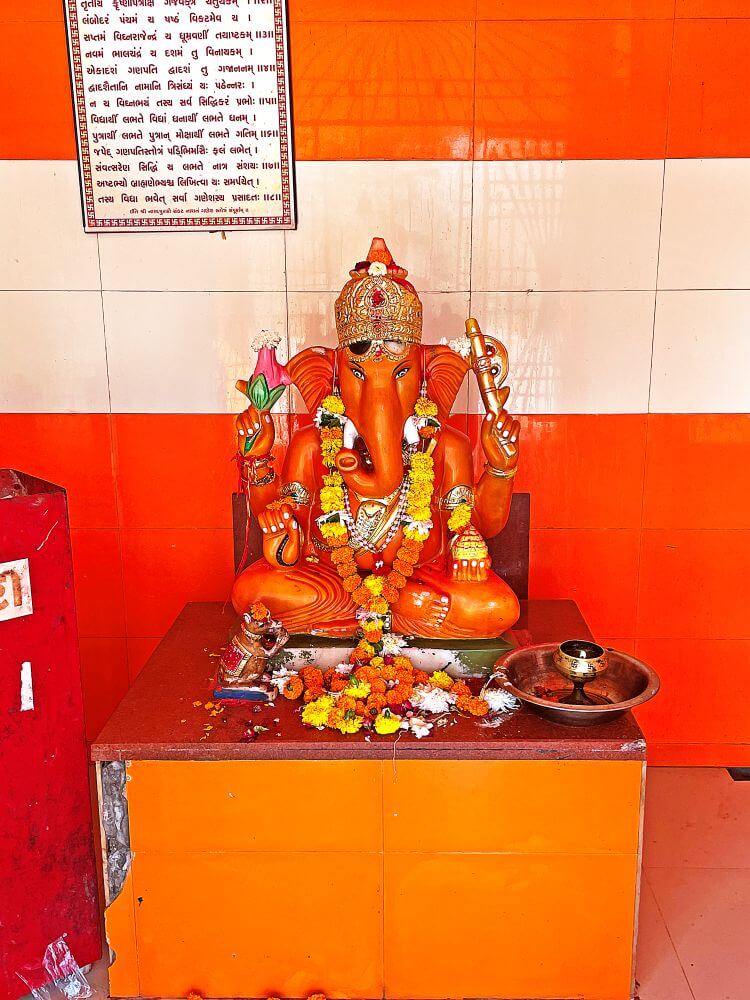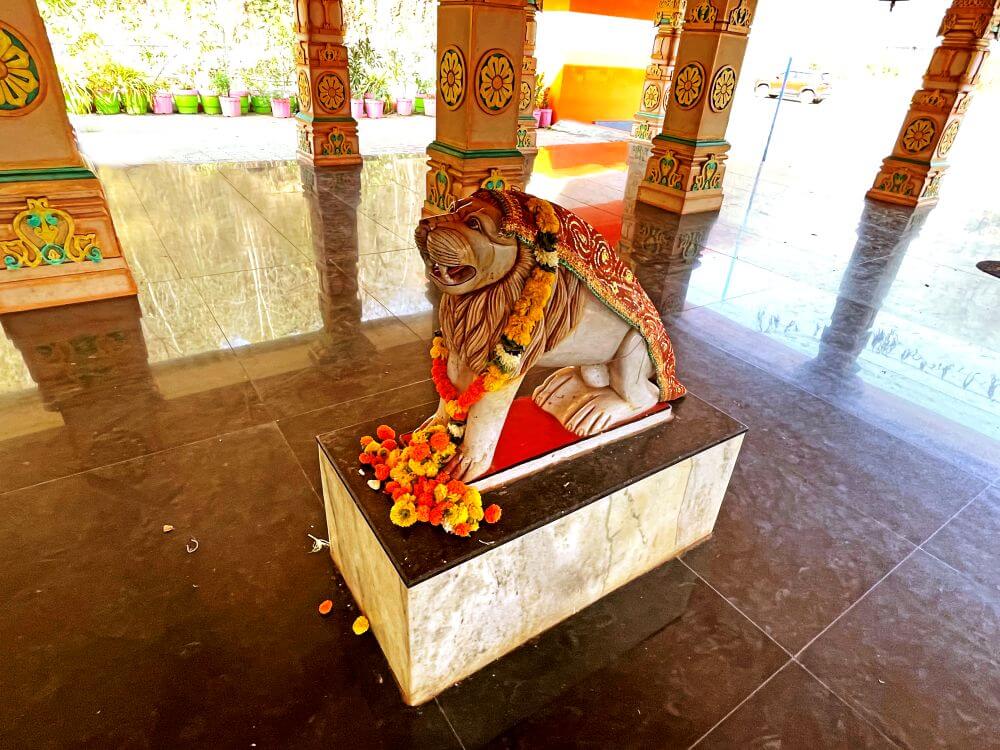 Gusmai Madi Mata, believed to be an incarnation of Jagdamba who appeared in Treta Yuga to kill two demons named Gus and Ghus, is worshipped as the family deity (Kuldevata) by the tribal community. Devotees believe her blessings lead to an increase in livestock. Originally, her abode was located on a hill in Padamdungri village in the Satpura mountain range. According to legend, the goddess descended from the hilltop at the request of a pregnant devotee. Today, a beautiful temple stands at this location.
Gusmai Madi Mata, believed to be an incarnation of Jagdamba who appeared in Treta Yuga to kill two demons named Gus and Ghus, is worshipped as the family deity (Kuldevata) by the tribal community. Devotees believe her blessings lead to an increase in livestock. Originally, her abode was located on a hill in Padamdungri village in the Satpura mountain range. According to legend, the goddess descended from the hilltop at the request of a pregnant devotee. Today, a beautiful temple stands at this location.
Devotees firmly believe that the site of this temple is spiritually potent and enhances livestock prosperity. Hence, not only tribal people but also devotees from various regions of Gujarat worship her. Legend states that there was once a city named Padmavati during Treta Yuga, ruled by Queen Padmavati.  In the forest surrounding the city lived the demons Gus and Ghus, who tormented its citizens. To rid themselves of this menace, the people began worshiping Jagdamba. Subsequently, Jagdamba appeared and vanquished these demons with her trident. After this event, the villagers requested her to reside there permanently, which she accepted by settling on a hill called Padmadungari south of Mount Kalakakar.
In the forest surrounding the city lived the demons Gus and Ghus, who tormented its citizens. To rid themselves of this menace, the people began worshiping Jagdamba. Subsequently, Jagdamba appeared and vanquished these demons with her trident. After this event, the villagers requested her to reside there permanently, which she accepted by settling on a hill called Padmadungari south of Mount Kalakakar.
After killing demons Gus and Ghus, the goddess became known as Gusmai Madi Mata. The tribal community in the region began worshipping her as their family deity. Later, a temple was built at the foot of the hill. The temple’s origin has an associated legend. A childless woman, who was a dedicated devotee of the goddess, prayed regularly for a child. Due to her devotion, she soon became pregnant but found it difficult to climb the hill in the seventh-eighth month. Standing at the hill’s base, she prayed to the goddess, asking her to accept her worship from there. That night, the goddess appeared in her dream, telling her that she no longer needed to climb the hill and the goddess would herself descend. The next day, a large stone from the hill descended to the spot. Devotees began worshipping this stone, eventually constructing a small temple around it. Recent renovations gave the temple its current form.
Situated amidst dense forests on elevated land, the temple can be reached by a paved road through an entry archway. Trees line both sides of the road, and a garden is nearby. The spacious temple courtyard is paved with blocks. During Navratri, special rituals are performed in the courtyard. Two smaller temples with sloping roofs flank the main temple. The left temple houses a stone idol of Hanuman, while the right temple contains an idol of Ganapati.
The spacious temple courtyard is paved with blocks. During Navratri, special rituals are performed in the courtyard. Two smaller temples with sloping roofs flank the main temple. The left temple houses a stone idol of Hanuman, while the right temple contains an idol of Ganapati.
The Gusmai Mata temple is constructed in a modern architectural style, consisting of a Sabha Mandap (assembly hall) and a Garbhagriha (sanctum sanctorum). The sanctum’s roof is pyramid-shaped, adorned with miniature temple structures, topped by a dome-shaped Amalaka and a Kalash. The Sabha Mandap features sloping roofs, decorative arches, and intricately carved pillars. A marble lion, the goddess’s vehicle, is placed in front of the sanctum, and a metal idol of the goddess stands near a donation box. The sanctum has black marble walls adorned with golden images of Surya and Lakshmi seated on a lotus. Above the entrance is an idol of Goddess Durga. The sanctum contains a significant stone representing the goddess, wrapped in cloth, alongside a trident.
The original site of worship for the goddess is located on a hill behind the temple, accessible via stairs for devotees who wish to visit it as well. Various devotees from Gujarat come here for blessings from this awakened goddess, especially during Navratri when numerous events take place at this location.
especially during Navratri when numerous events take place at this location.
Sharabhangeshwar Mahadev Temple
Located one kilometer from the Gusmai Madi Mata temple, the ancient Sharabhangeshwar Mahadev temple is associated with a mythological legend. Sage Sharabhang performed austerities nearby, suffering from leprosy due to a curse. During their 14-year exile, Shri Ram, Lakshman, and Sita arrived here. To hide his condition, Sharabhang used his spiritual powers to mask his illness. However, Shri Ram requested him to reveal his true state. Upon doing so, Shri Ram shot an arrow into the ground, releasing warm healing water, creating a pond where Sharabhang bathed and was cured. Sharabhang then established a Shivling at this site.
The expansive temple complex includes a small Mahakal shrine at the entrance. The main temple features a large sacrificial altar (Homkund) and consists of a Mukha Mandap (entrance hall) and three sanctums, each topped by dome-shaped spires. A marble Nandi idol faces the main sanctum, and a smaller black stone tortoise is placed ahead. The Shivling is surrounded by marble flooring, shaded by a serpent sculpture and a brass vessel with a silver umbrella. Parvati and Ganesha’s marble idols are housed behind the sanctum, with Manibhadra and Hanuman idols in the left and right sanctums respectively. Many devotees visit every Monday, with Mahashivratri being celebrated grandly.
